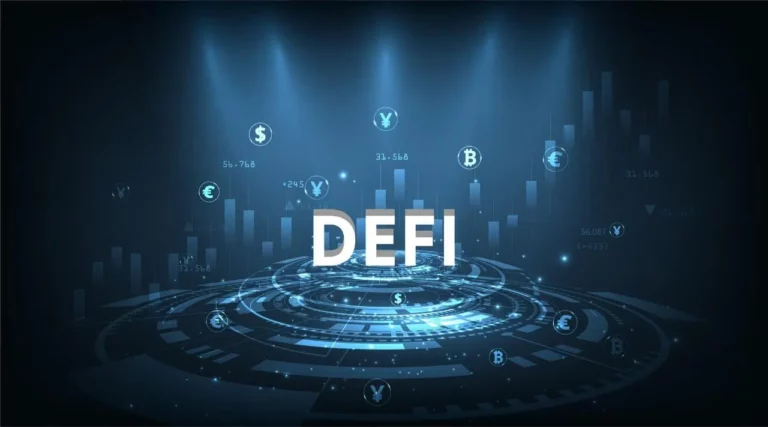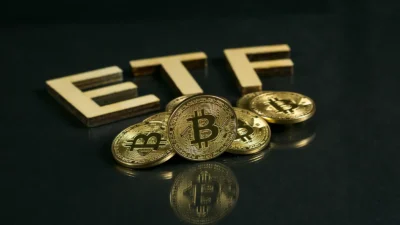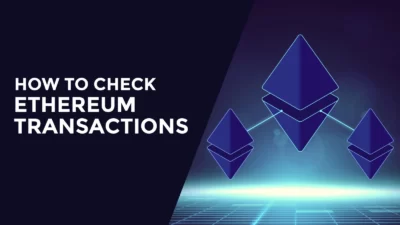Table of Contents
ToggleYield farming in crypto is a process by which you can maximize your cryptocurrency returns. By taking advantage of different opportunities available to you, you can significantly increase your earnings potential. Keep reading this blog post to find out more about yield farming and learn how you can begin too.
What Is Yield Farming in Decentralized Finance (DeFi)?
Yield farming refers to the practice of earning interest on cryptocurrency holdings by providing liquidity to decentralized finance protocols. In order to farm, or earn, rewards, users must deposit their cryptocurrency into a liquidity pool. The size of the reward is generally proportional to the number of funds deposited and the length of time the funds are locked up.
Some yield farming protocols also require users to provide collateral, which adds an additional layer of risk. Yield farming can be a great way to earn rewards on your cryptocurrency like Ethereum and Bitcoin, but it is important to understand the risks before getting started.
How Does It Work
In the most basic sense, yield farming is the practice of using your crypto assets to earn interest on other crypto assets. For example, you might use your Ethereum 2.0 to help secure a lending pool on MakerDAO, which would then earn you DAI (the native token of MakerDAO) in return. Yield farming has become increasingly popular in recent months as a way to earn interest on one’s crypto holdings, and there are now a wide variety of yield-farming opportunities available.
One thing to keep in mind, however, is that yield farming is often a highly speculative activity, and it’s important to do your research before getting involved. There’s no guarantee that you’ll make money yield farming, and you could even end up losing money if the project you’re supporting fails. As with any investment, it’s important to approach yield farming with caution and only invest what you can afford to lose.
Types of yield farming
1) Liquidity provider
Liquidity provision is the process of making a financial asset available to trade on a given market. Liquidity providers typically buy and sell assets on their own behalf, but they also act as middlemen between buyers and sellers, providing the necessary capital to keep the market running smoothly. By doing so, they help to ensure that prices remain stable and that trades can be executed quickly and efficiently.
In yield farming, liquidity providers are rewarded not only for the capital they provide but also for the risk they take on by holding assets in volatile markets. This can be a lucrative endeavor, but it can also be very risky. As such, yield farmers must carefully consider the risks and rewards before deciding whether or not to enter this new and exciting world of finance.
2) Lending
Lending yield farming is the practice of using your cryptocurrency like USDT or Bitcoin to lend it out to others in the hopes of earning a higher return on investment. This can be done through various platforms that offer lending services. The most popular form of lending yield farming is through decentralized exchanges, where you can lend your cryptocurrency to others who are looking to trade on the platform.
In return for lending your cryptocurrency, you will receive a portion of the fees that are generated from the trades that take place on the platform. This can be a very lucrative way to earn a return on your investment, as long as you are willing to take on the risk of lending to others.
3) Borrowing
Borrowing yield farming in crypto is a way to earn interest on your cryptocurrency holdings. The process involves borrowing funds from a lending platform and then using those funds to buy and sell USDT in Dubai or any other cryptocurrency. The goal is to generate a profit from the price difference between the time of purchase and the time of sale. In order to maximize profits, borrowers often use leverage, which can result in higher risks. However, when done correctly, borrowing yield farming can be an effective way to earn interest on your cryptocurrency investment.
4) Staking
When you stake your crypto, you’re essentially locking it up for a set period of time – usually anywhere from a few days to several months. In return, you earn a reward, which is typically paid out in the form of staked currency. For example, if you stake 10 ETH on a platform that offers a 2% monthly reward, you would earn 0.2 ETH every month. Of course, the actual amount of rewards you earn will depend on the size of your stake, the length of time you’re staking for, and the specific platform you’re using.
Staking is a type of yield farming that allows you to earn additional rewards by providing liquidity to a protocol. In order to do this, you need to deposit your tokens into a special pool, which can then be used to trade other assets. The exact mechanics vary from protocol to protocol, but generally speaking, yield farmers are rewarded for their contributions with a portion of the fees generated by the platform.
5 Popular yield-farming protocols
Compound
Compound is an open-source protocol that enables users to collateralize their crypto assets and earn interest on them. It is a decentralized lending platform built on Ethereum that allows users to supply collateralized debt positions (CDPs) to Compound smart contracts. The protocol enables users to borrow or lend directly from each other without the need for a centralized exchange.
The Compound protocol is designed to provide a fair, transparent, and accessible way to buy Bitcoin in Dubai and earn interest on digital assets. It is also intended to be compatible with other protocols and wallets, making it easy for users to integrate it into their existing workflow. In addition, the protocol includes a number of safety mechanisms to protect against losses due to system failure or fraud.
Aave
Aave is a decentralized lending platform that allows users to earn interest on their cryptocurrency deposits. Unlike traditional lending platforms, Aave is powered by a network of decentralized lenders, which helps to keep interest rates low. Users can also choose to lock up their cryptocurrency deposits in order to earn higher interest rates.
Aave is an attractive option for yield farmers because it offers high transaction speeds and low fees. Moreover, the platform is designed to be user-friendly, with an intuitive interface that makes it easy to track your earnings. In sum, Aave is a powerful yield farming protocol that offers users a number of advantages.
Curve Finance
Curve Finance is a yield farming protocol that allows users to trade multiple tokens in a single transaction. This is accomplished by using a pool of liquidity providers to swap tokens. The protocol then automatically selects the best rate from the pool and executes the trade. By using a pool of liquidity providers, Curve Finance is able to offer better rates than traditional exchanges.
In addition, the protocol charges a 0.04% fee, which is used to incentivize liquidity providers and cover network costs. Curve Finance also features a unique risk management system that helps to protect against losses due to market volatility. Overall, Curve Finance is a versatile and user-friendly protocol that offers competitive rates and robust risk management features.
Uniswap
Uniswap is a decentralized protocol for trading Ethereum tokens. The project was launched in November 2018 by Hayden Adams. The protocol allows users to trade ETH and ERC20 tokens without the need for a centralized exchange. Uniswap uses an automated market maker (AMM) algorithm to provide liquidity for trades.
The protocol has been hugely successful, with over $2 billion worth of ETH traded on the platform since its launch. In May 2020, the Uniswap team launched the UNI token, which gives holders a 0.3% share of all trading fees collected by the protocol. The UNI token has been a huge success, with its price increasing from $3 to over $8 in just a few weeks. Yield farming has become a popular way to earn rewards on Uniswap, with users providing liquidity to trade pairs in exchange for UNI tokens.
Instadapp
Instadapp is a yield farming protocol that allows users to automatically earn interest on their cryptocurrency holdings. The platform offers a wide range of features, including the ability to connect to numerous exchanges and wallets and to track one’s portfolio in real-time. Instadapp also offers a social media-style feed where users can share tips and advice with each other. Overall, Instadapp is a powerful tool that can help users maximize their earnings from yield farming.
Calculating yield farming returns
When it comes to yield farming, understanding how to calculate your potential return on investment (ROI) is essential. Unfortunately, there is no one-size-fits-all formula for ROI calculation, as the amount of return you can expect to earn will vary depending on the specific protocol you’re using, the tokens involved, and the overall market conditions. However, there are a few basic steps you can follow to get a general idea of your expected yield farming returns.

First, take a look at the current APY (annual percentage yield) for the protocol you’re interested in. This number will give you a baseline for the returns you can expect to earn. However, it’s important to remember that APY is not always accurate, as it can fluctuate based on market conditions.
Next, calculate the value of the tokens you’re staking in the pool. This will give you an idea of how much your returns could be worth in USD terms.
Finally, factor in any additional rewards that may be available through the protocol (e.g., bonus rewards for early stakers). This will help you get a more accurate estimate of your potential earnings.
By taking these steps, you’ll be able to get a good idea of what your yield farming returns could be. Just remember that ROI is never guaranteed, so make sure to do your own research before staking any assets!
Major Benefits of Yield Farming
Yield farming has become a popular way to earn rewards in the cryptocurrency world. Here are 5 major benefits of yield farming:
- Yield farming allows you to earn rewards for providing liquidity to a pool. This means that you can earn interest on your crypto without having to put it at risk by trading it.
- Yield farming can help you diversify your portfolio. By putting your crypto into a yield farming pool, you can spread your risk across a number of different assets.
- Yield farming can be a great way to build up your portfolio. By reinvesting your rewards, you can quickly grow your holdings.
- Yield farming can provide passive income. As long as you continue to provide liquidity to the pool, you will continue to earn rewards. This makes yield farming a great way to generate some extra income.
- Yield farming is a relatively new concept, which means there are plenty of opportunities for early adopters to get involved and earn some generous rewards.
What are the risks of yield farming?
Smart contract hacks
When participating in crypto yield farming, one of the risks to be aware of is the possibility of a smart contract hack. This type of attack can occur if there are vulnerabilities in the code of the smart contract that is used to govern the yield farming activity. If a hacker is able to exploit these vulnerabilities, they may be able to steal funds from the yield farm or otherwise disrupt the operation of the farm. While there are steps that can be taken to try to prevent these types of attacks, such as auditing the smart contract code, it is important to be aware that these risks exist and that you may not be able to completely eliminate them.
Volatility
When you hear the term volatility risk, it’s often in reference to stocks and other traditional investments. Volatility is simply the measure of how much an asset’s price fluctuates over time. So, a stock with high volatility is one that tends to see big swings in price, while a low-volatility stock is one that sees smaller swings.
When it comes to yield farming in the cryptocurrency world, volatility risk is a bit different. It’s still about price fluctuations, but in this case, it’s the volatile nature of crypto prices that can pose a risk to your earnings. If the price of the asset you’re yield farming drops sharply, your earnings will take a hit. And if the price of the asset you’re farming rises sharply, your earnings will also increase – but so will the amount of risk you’re taking on. So, when it comes to yield farming and crypto, always be aware of the volatility risk involved. It can make a big difference in your earnings potential.
Regulatory risk
It is no secret that the cryptocurrency industry is fraught with regulatory risks. One of the most prominent examples is the case of Bitfinex, which was accused of using customer funds to cover up losses incurred by its sister company, Tether. The incident resulted in a loss of confidence in the cryptocurrency exchange and led to a sharp decline in the value of Bitcoin. However, this is not the only instance of regulatory risk in the industry. Regulatory risk is just one of many risks that investors need to be aware of when considering investing in cryptocurrencies. Others include market risk, liquidity risk, and technology risk. Nevertheless, regulatory risk is perhaps the most daunting for investors, as it can come from both government agencies and self-regulatory bodies. As such, it is important to do your due diligence before investing in any cryptocurrency project.
Rug pulls
Rug pulling is a serious risk in the world of cryptocurrency yield farming. For the uninitiated, yield farming is the process of earning interest on your digital assets by staking them in a lending pool. While this can be a great way to earn some extra income, it’s also important to be aware of the risks involved. One of those risks is rug pulling. Rug pulling occurs when a yield farmer decides to abruptly exit the pool, taking all of the deposited funds with them. This can leave other farmers high and dry and can cause the lending pool to collapse.
Rug pulls are often carried out by malicious actors who are looking to take advantage of unsuspecting investors. For this reason, it’s important to do your due diligence before participating in any yield farming activity. By understanding the risks involved, you can help protect yourself from becoming a victim of rug pulling or other fraud.








